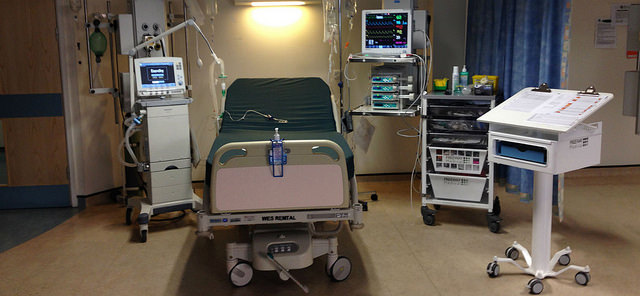There might be some irony to contracting an infection at a healthcare facility, but healthcare-associated infections (HAIs) present a serious threat to patient safety.
What are HAIs?
Healthcare-associated infections, or HAIs, are contracted from treatments in hospitals, clinics, and other healthcare settings. These infections can result from various medical procedures, but the four most common types of HAIs are:
- Catheter-associated urinary tract infection (CAUTI)
- Central line-associated bloodstream infection (CLABSI) from bacteria-contaminated catheters connected to major veins
- Surgical site infection (SSI)
- Ventilator-associated events (VAE).
Most of these infections occur during invasive procedures, such as blood transfusions and surgery, or when pathogens infect equipment entering the human body. For instance, a type of HAI caused by the bacteria Clostridium difficile led to almost 500,000 infections in the U.S. in 2011 and 29,000 patients died within 30 days of the initial diagnosis.
Image Source: Portra
According to a recent survey conducted by the Centers for Disease Control and Prevention (CDC), one in every 25 hospital patients has at least one HAI. There were also roughly 722,000 HAI cases among U.S. hospital patients in 2011, with 75,000 HAI-related deaths in larger hospitals.
HAI Elimination
HAIs can also result in additional costs to hospitals. According to the most recent report by the CDC, the overall direct cost to hospitals due to HAIs ranges from $35.7 billion to $45 billion each year. Considering the severe consequences HAIs can have on the healthcare system, as well as on patients and healthcare workers, developing prevention strategies is crucial.
Image Source: jodijacobson
Eliminating the incidence of HAIs requires effort from hospitals, patients, and institutes like the CDC. Patients should inform themselves of these infections and what they can do to avoid contracting a HAI. To make this information more accessible, the CDC maintains a website on HAIs with a variety of resources for healthcare administrators and the public. Hospitals and healthcare workers should work to encourage infection control practices, such as frequent hand washing, careful monitoring of invasive equipment like catheters, and careful use of antibiotics. These preventative measures alone are estimated to save $25 to $31.5 billion in medical costs.
How can patients reduce the risk of contracting a HAI?
Besides using the various resources available online, patients can also take action by:
- Washing hands frequently
- Getting vaccinated for the flu and other infections
- Recognizing the symptoms of infection
- Asking their doctor for information on any antibiotics being prescribed.
Despite the additional work involved in prevention, these strategies could save patients a longer hospital stay and assure their well-being.
Featured Image Source: David Burns










